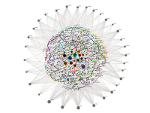 Outreach
Outreach
OUTREACH
IFISC researchers examine oceanic connectivity and map hydrodynamic provinces to help designing marine reserves.
Conserving and protecting natural ecosystems against the impacts of multiple human-induced stressors is of crucial importance to maintain biodiversity and to ensure their economical and societal services. The preparation of efficient conservation measures requires however a good understanding of the geographic distribution of all species and of their spatial dynamics. While this is relatively attainable over land due to the slowly evolving landscape and directly observable movements of animals, it remains complicated in the ocean. Indeed, most marine organisms have limited moving abilities as adults while they disperse large distances through the vast and turbulent oceanic environment as larvae (or other “propagules”). Larval drift through the oceanic circulation can connect distant populations, thus affecting both composition and structure of marine populations. As such, oceanic dispersal and connectivity have been identified as crucial factors for structuring marine populations and designing marine protected areas.
In a recent paper published in GRL, IFISC researchers developed a new approach to study larval dispersal by ocean currents and to characterize oceanic connectivity. This method combines for the first time two powerful tools, employed separately in the past, to study the connectivity of the entire Mediterranean basin. On the one hand, they used surface velocity fields from a high-resolution circulation model to construct a network of connected subareas of the Mediterranean Sea among which larvae of various marine species are being transported. On the other hand, a state-of-the-art mathematical technique borrowed from “Graph Theory” allows extracting from this transport network new diagnostics particularly useful for the design of marine reserves.
![]()










